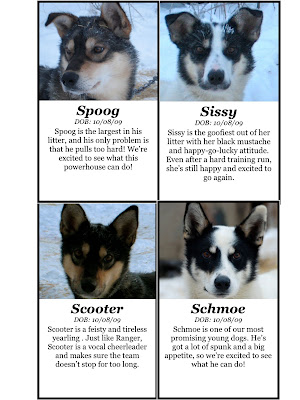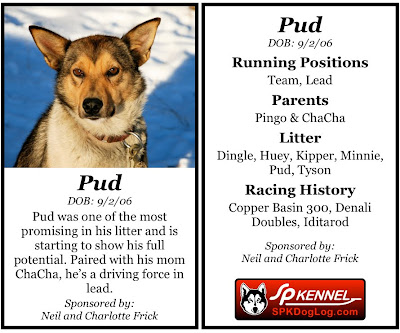For many folks unfamiliar with the world of dog sled racing, I’ve decided to give a slightly different perspective of the CB300 and highlight a group of people easily overlooked: the handlers. Before I delve into the trail, checkpoints, and challenges of the race from the eyes of handler, I’ll first explain who/what exactly is a handler.
Handlers are essential to most races (excluding the Iditarod), and yet we can do so little during the actually competition. In fact, the term ‘handler’ is a bit misleading, seeing as we cannot touch the dogs or assist the musher once the race begins. Perhaps, a more accurate title would be ‘observer’. Essentially, we’re like a pit crew at Talladega that can’t actually touch the car, instead saying, “Hey Dale, it looks like you’ve got a flat tire. You might want to fix that.” We can’t help bootie or feed the dogs; we can’t heat up water; we can’t lie out straw; we can’t even pet or massage the dogs.
So what can we do? We can scout out a checkpoint before our musher arrives and stomp out the perfect spot for our team to camp. We can find where the water, drop bags, straw, food, and lodgings are located. As the mushers tire, we can gently remind them that they were going to wrap so-and-so’s wrist, or that they wanted to feed the two wheel dogs too. We can keep track of their rest times and wake them up when it’s time to leave. Once the musher and the dogs hit the trail, we can clean up their campsite, pack up the truck, take any dropped dogs with us, then drive to the next checkpoint to wait and watch some more. In between driving, waiting, watching, and cleaning, we catch a few moments sleep.
After reading the responsibilities of a handler, you may wonder who in their right mind would sign up for that job? And the answer is…everyone. Often times we’re volunteers who just like to be a part of the dog sledding world for a weekend. For many, meeting and interacting with the other handlers is half the fun. We’re an eclectic bunch, ranging in age, profession, interests, and experience, but for some reason we all find ourselves standing at -10, anxiously waiting for a light to start winding its way through the trees. Among the many characters I met were a young couple from Norway, a fellow Alabamian experiencing her first Alaskan winter, a guy from Anchorage with zero dog knowledge, and a “multi-handler” who has no real kennel affiliation but shows up to races and handles for whoever needs assistance. The excitement of racing and the enthusiasm of the dogs draw people from all walks of life who just want to be a part of the experience, myself included.
Now that I’ve established who/what is a handler, we’ll look at the Copper Basin 300 through the eyes of a participant who never sees more than 50 yards of the trail. Let’s start with the weather. During most of the race, the temperatures were warm by Copper Basin standards: 10 to -10 degrees. For handlers, this was wonderful. It is much more enjoyable to wait outside in these temps than the typical -30 to -40 degrees commonly found during Copper Basin. For the musher, however, this meant more open water and deep overflow, so that they returned from runs wet and cold. This year’s trail route also varied from previous years. The race started from Paxson, and once all teams were on the trail, the handlers could drive the 3-4 hours to the next checkpoint, Chistochina. For the mushers, starting in Paxson meant that they were able to tackle the enormous hill with a fresh dog team right from the beginning. For the handlers, the already long drive from Paxson to Chistochina was further complicated by the 2-hour time differential between the first and last bibs (aka Aliy and Allen). The addition of the Spot Trackers in this year’s race was also incredibly helpful for the handlers, when they worked. Now only if we could get wireless or even cell phone reception at each of the checkpoints. And finally the finish in Paxson along Paxson Lake and the airstrip, while long for the mushers, gave the handlers a heads up as to their arrival so that we weren’t caught sleeping when they crossed the finish line.
Overall, handling for the SP Kennel teams in the Copper Basin 300 was three days packed with fun and excitement. I had the chance to learn from veteran CB300 handlers, Ray and Bob, and I’m looking forward to the upcoming races!




